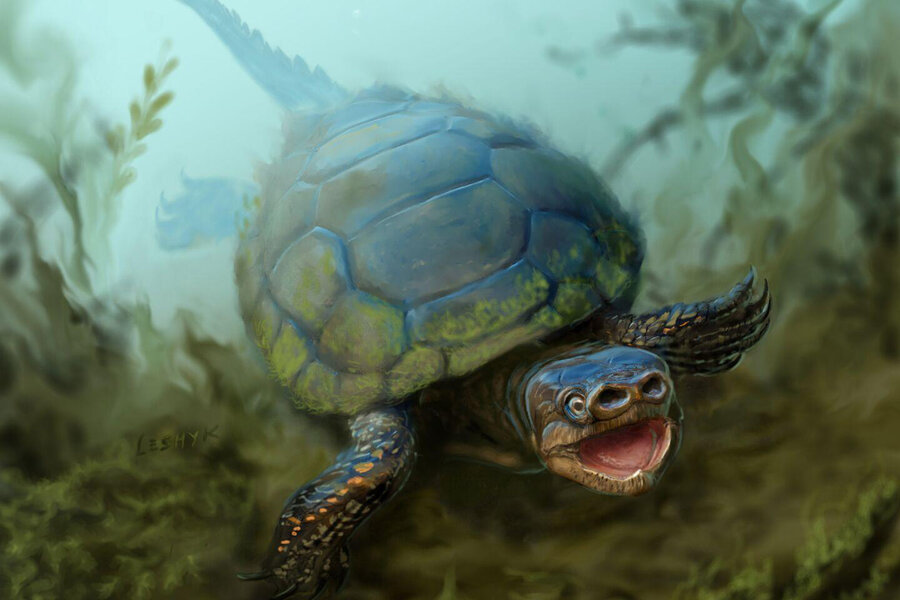Bizarre pig-nose turtle once swam the prehistoric seas of Utah
Loading...
Researchers in Utah have discovered a 76-million-year-old extinct species of sea turtle, known for its weird pig-like snout.
“Anatomically, it’s one of the most bizarre turtles that ever lived,” Joshua Lively, author of the study published Wednesday in the Journal of Vertebrate Paleontology. “More importantly, it adds to a growing story about ecosystem dynamics during the Late Cretaceous across western North America.”
As Mr. Lively explains, the Arvinachelys goldeni is more than just a weird-looking turtle. This discovery is especially important for researchers as it helps explain a gap in the evolution of turtles.
“With only isolated skulls or shells, we are unable to fully understand how different species of fossil turtles are related, and what roles they played in their ecosystems,” Randall Irmis, curator of paleontology at the Natural History Museum of Utah, told the University of Utah.
Ancient turtle specimens typically consist of either a skull or a shell. The discovery of a pig-nose turtle included not only its skull and shell, but also partial hind limbs, a partial forelimb, and a vertebrae from both its neck and tail.
The researchers believe the bizarre turtle lived during in the Late Cretaceous Period, when western and eastern North America was separated by a sea. Dinosaurs living in the western half, referred to as Laramidia, diversified from each other even though they were living on the same continent. Researchers believe species in southern Laramidia (Utah, New Mexico, and Texas) were evolutionarily different from their relatives in the north (Montana and Alberta).
“The assumption has always been that organisms would be able to range over broad areas,” Lively explained in a press release. And the confinement of Arvinachelys supports the theory of evolutionary isolation between northern and southern Laramidia.
During the turtle’s lifetime, southern Utah was geographically similar to present-day Louisiana. Their habitat was wet and hot, defined by rivers and flood plains.
Lively told the University of Utah that changing sea levels and frequent shifts in climate might account for the dispersal barriers. He also believes this discovery has relevant implications, because “understanding how ancient animals coped with a changing climate will help scientists understand how modern animals and ecosystems are likely to respond to present day and future climate change.”
The scientists participating in the study said the discovery would not have been made without the help of local volunteers.
“Volunteers are involved in every aspect of what we do, from field work and digging up specimens to preparing them,” Dr. Irmis told the University of Utah. “We couldn’t do what we do without them. We really consider them key team members.”
The pig-nose turtle was even named after a volunteer fossil preparator, Jerry Golden.








